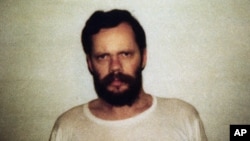32 years ago today on March 16, 1985, Associated Press journalist Terry Anderson was abducted by Hezbollah militants in Beirut, Lebanon and held in captivity for nearly seven years.
“I had about a year and a half in solitary [confinement] which… nearly destroyed me,” Anderson said during an address he gave at a newspaper association conference last year.
“It is soul destroying,” Anderson said. “I discovered that I need people."
On the day he was taken hostage. Anderson, AP’s chief Middle East correspondent at the time, had just finished a morning game of tennis.
Three men forced him from his car in Beirut at gunpoint and pushed him into a sedan, covered him from head to toe with a heavy blanket, and made him crouch head down in the footwell behind the front seat.
His captors, Shi’ite militants seeking to oust the United States from Lebanon during the Lebanese civil war, drove him to a garage, pulled him out of the car, put a hood over his head, and bound his wrists and ankles with tape. He was grilled for the names of other Americans in Beirut, but he gave no names.
They threw him in the trunk of the car, drove him to another building, and put him in what would be the first of a succession of cells across Lebanon.
On December 4, 1991, Anderson’s Hezbollah captors finally released him after 2,455 days. Anderson was held hostage longest of the roughly 100 foreigners abducted during Lebanon’s civil war. Eleven others died or were thought to have been murdered.
Anderson spent his entire captivity blindfolded and was released when the 16-year civil war came to an end.
Since then, he has worked as a journalist, run small businesses, taught at the Columbia University Graduate School of Journalism, the E.W. Scripps School of Journalism at Ohio University, at the University of Kentucky journalism school in 2009, and then at the University of Florida until he retired in December 2015.
He also ran for the Ohio state Senate. Anderson wrote a syndicated column for King Features on government and politics, and is a well-known speaker around the United States.
In 1993, he published “Den of Lions: Memoirs of Seven Years,” a book about his ordeal.
Today, Anderson is an honorary chair at the Committee to Protect Journalists.
“All of us had a lot of problems when we came home. One went into a mental hospital and never got out before he died,” Anderson recalled. “We were all damaged in a lot of different ways,” he said, citing his three failed marriages.
“Am I a jerk because I’m a jerk or because I was a hostage? I can’t tell anymore.”











